Klagenfurt
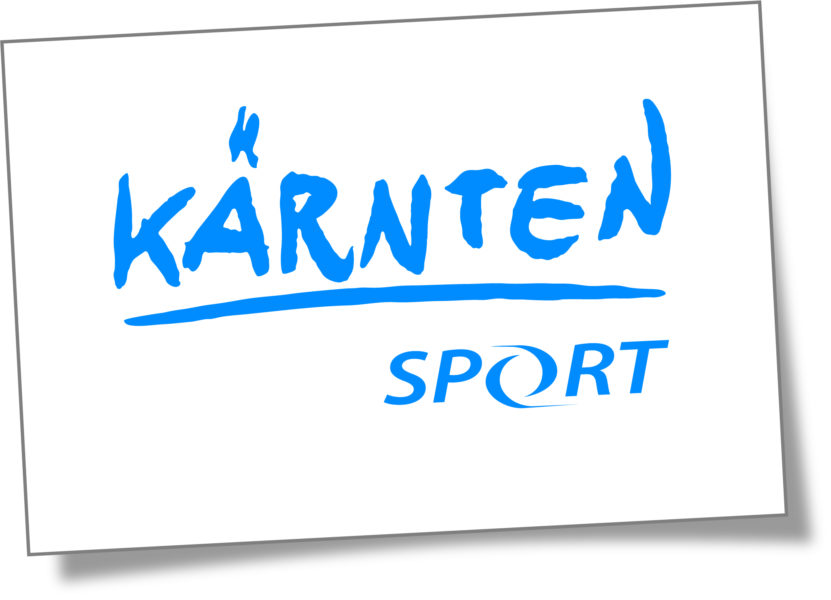
Austria’s easy-going south
Holidays in Carinthia with breath-taking nature as a backdrop
Mother nature meant well when she created Carinthia, Austria’s sunny south. Numerous unpolluted, warm bathing lakes await visitors here in the middle of the Alps.
So do mountains, ranging from the mighty three-thousanders to the gentle Nock Mountains. From their peaks, the view roams over country that is characterised by the cultural diversity of the Alpe-Adria region, by the mild and sunny climate on the southern side of the Alps and by people who greet their guests cheerfully, openly and with a large helping of joie de vivre.
Carinthia boasts more bodies of water than any other state in Austria – it has no fewer than 200 bathing lakes, 8,000 kilometres of rivers, 60 mineral springs and 43 glaciers. It is also an ideal place to begin the search for the “taste of childhood”, to re-experience beautiful memories or experience them for the first time.
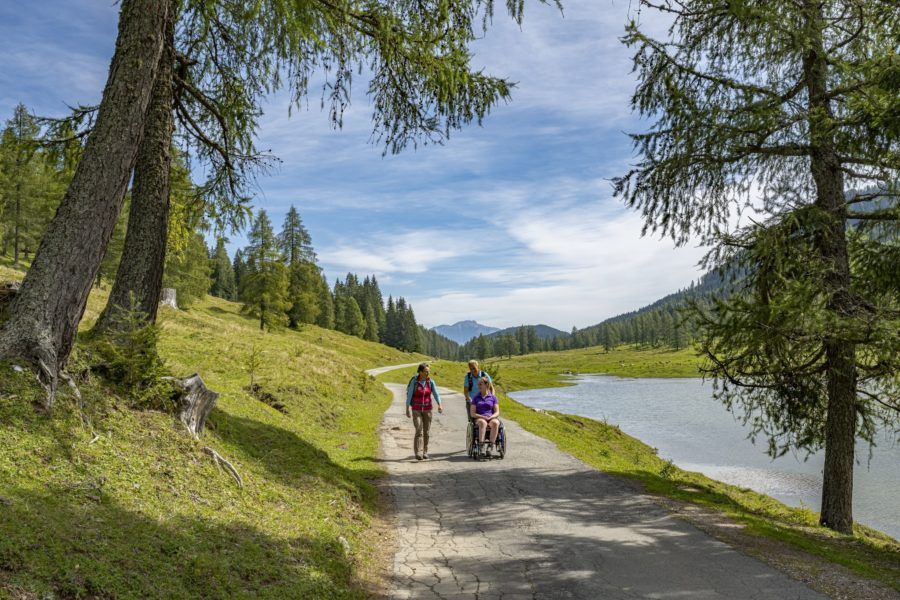
The wonderful combination of mountains and lakes ensures that visitors will not miss out on activities and intense experiences. Carinthia’s natural scenery makes a divine setting for all of it. Take hiking for example: depending on inclination, mood, demand and conditions, signposted tours are waiting across all altitudes across the region.
At 3,798 metres, the Grossglockner is the highest mountain in the country. This is also where Carinthia’s long-distance hiking path, the Alpe-Adria Trail, begins. Covering 43 stages and more than 750 kilometres, it leads through Carinthia and Slovenia to the Adriatic Sea in Italy. Info:http://alpe-adria-trail.com
For those who prefer a less strenuous approach: try one of the Slow Trails which you can find throughout Carinthia! People love walking along the shores of a lake. The open space created by the surface of the water, the varying shapes of the mountain backdrop against the horizon, the gentle lapping of the waves, the scent of the flora and fauna that surrounds: this combination creates an atmosphere that can relax yet inspire.
The new Slow Trails, within view of some of the loveliest Carinthian lakes, have been designed to clear the head, set spirits free and sustainably wind down. Slow Trails are relaxed paths of no more than 10 km in length, with a max. 300 m difference in altitude. None of the trails takes longer than three hours to complete, and bathing is possible on all – be it a refreshing cool-down for the calves or barefoot across the soft moss in the forest lakes. More information: https://www.visitcarinthia.at/hiking/slow-trails/
Also a very relaxing way to get to know the Carinthian landscape are the guided nature experience programmes, such as the “Magic Moments” tours, which invite visitors to experience and discover; these range from observing wildlife (e.g. ibexes, eagles, marmots) and culinary river trips with fish tastings to e-bike tours, sunrise hikes, glacier treks and roaming the bays in small wooden rowboats. Info: Magic Moments (German only)
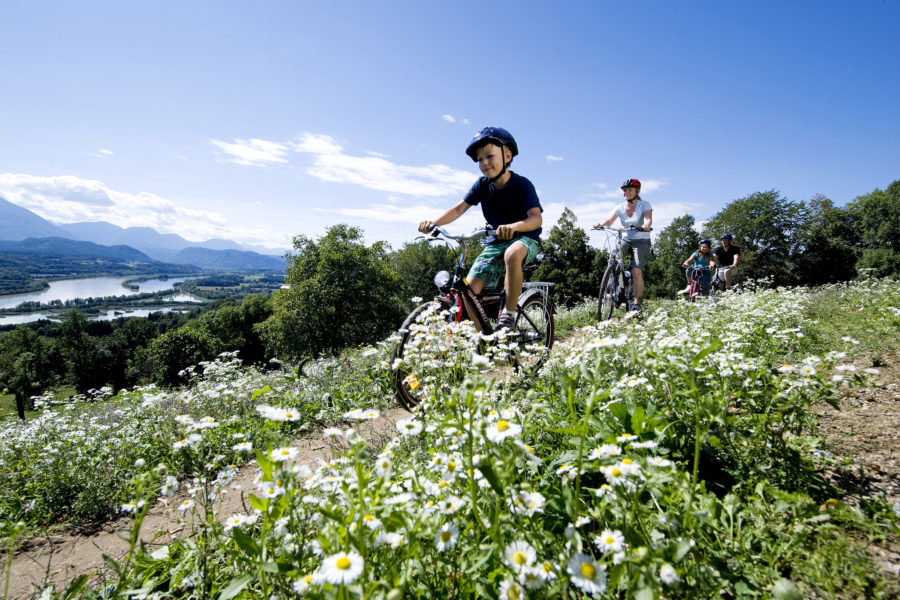
Carinthia can also be “conquered” by bicycle. For example, visitors can cycle the Drava Cycle Path, which is sign-posted and, along several stages, guided and meanders for 222 kilometres through Carinthia along the state’s main river, the Drava. Individual stages can be covered by train, boat or on the Drava Cycle Path bus; baggage transport is available by request. Info: http://www.drauradweg.com
The Alpe-Adria Cycle Path is no less attractive; it leads from Salzburg through Carinthia to the Adriatic Sea. Info: www.alpe-adria-radweg.com
Carinthia has a comprehensively labelled cycle path network spanning 1,300 kilometres and 2,800 kilometres of mountain bike routes. There are attractive trails, for example, in Nassfeld, at Lake Weissensee, on Petzen Mountain, on Koralpe Mountain and in the Villach and Bad Kleinkirchheim regions. Info: https://www.visitcarinthia.at/mountain-bikin

What makes Carinthia special are its warm and clean bathing lakes. Families, adventurers and epicures find their holiday paradise on Lake Wörthersee, Lake Millstätter See, Lake Faaker See, Lake Ossiacher See, Lake Klopeiner See or Lake Weissensee.
Summer shows its best side even at the many smaller lakes. The variety of free-time activities gets the pulses of active holiday-makers racing, whether they go sailing, surfing, stand-up paddle boarding, diving, water skiing or boat touring.
However, a richly varied programme also awaits visitors in the areas around the lakes: panoramic hikes, combined boat trips and hikes, cycle rides around the lakes and much more.
The so-called “slow trails” (paths near the lakes at medium altitudes and covering shorter distances) are also especially popular.
Info: https://www.visitcarinthia.at/lakes
Regardless of the season, visitors should not miss the wellness activities and relaxing spa treatments at the thermal springs, bath houses, swimming pools and selected accommodation providers.
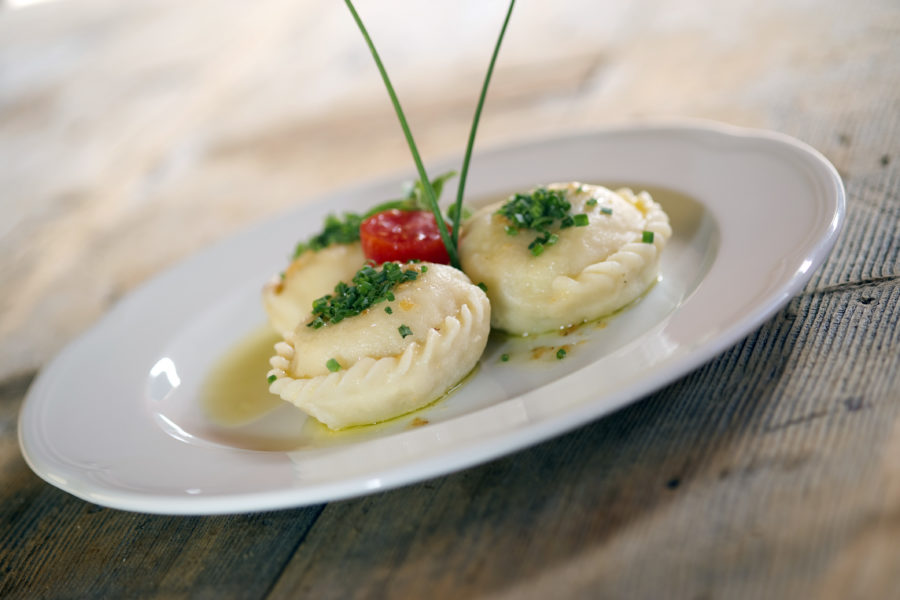
Lush green meadows scented with herbs, clean air, clear-as-glass waters and untouched flora and fauna; all of this also forms the basis of a multifaceted cuisine that enables visitors to experience Carinthia through taste. Carinthian Alpe-Adria cuisine, which is influenced by Italy and Slovenia, blends fresh ingredients from the region, ancient cooking traditions and new interpretations into a delicious whole. Carinthia is the world’s first Slow Food Travel Destination: for holiday-makers, this means a journey to the traditional food producers and the knowledge that has been passed down to them by actively participating in the craft of producing foods with cooking courses, behind-the-scenes tours and cooperation with the food and drink producers. Info: https://www.slowfood.travel/de
Visitors absolutely must try the Carinthian Käsnudel [cheese dumplings] and freshly caught fish bred in Carinthia. There are also exquisite seasonal dishes, such as the “Kirchtagssuppe” [“Fair Day” soup], a mixed meat soup with vegetables and double cream, accompanied by a sweet Reindling Easter cake, a special yeast pastry with cinnamon and raisins.
The many specialities also include Lesachtaler bread; the preparation of this bread was selected by UNESCO as an “intangible cultural heritage”. There is a special schnapps that is produced in Carinthia: it is a corn or fruit brandy that is stored with Arolla pine cones for a few weeks.
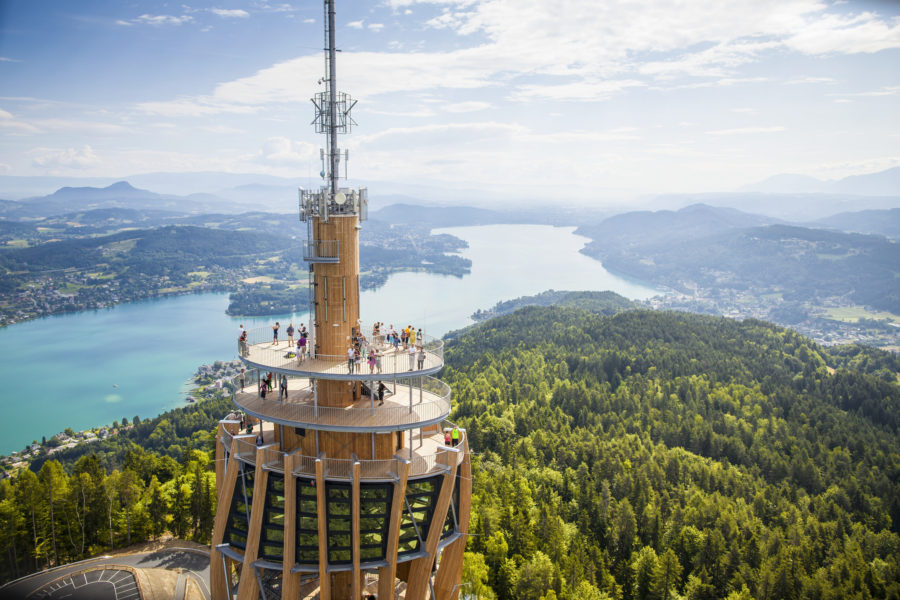
Witnesses to history
The south of Austria also invites visitors to follow the traces of an exciting history. Many witnesses to the distant past – more than 400 castles, fortresses and ramparts – are located throughout the country. One example is the medieval castle town of Friesach, where a castle building project is creating a bridge between the past and the present. The project involves the construction of a medieval castle complex exclusively using the tools and resources which were available in the Middle Ages – that means no electricity or machinery. Info: www.burgbau.at
Highlights from the culture programme
It is difficult to select a representative overview from the variety of cultural activities in Carinthia as the cultural calendar during the course of the year is too diverse for this.
The highlights include the Ingeborg Bachmann Prize – the Festival of German-Language Literature (http://bachmannpreis.orf.at), the Carinthian Summer Music Festival (http://www.carinthischersommer.at) and the Wörthersee Classics Festival (http://www.woertherseeclassics.com/festival/idee-des-festivals), which puts the composers Gustav Mahler, Alban Berg, Anton von Webern, Johannes Brahms and Hugo Wolf, who were avid fans of Lake Wörthersee, at centre stage.
Among the museums that are especially worth visiting are the Carinthian Museum of Modern Art (http://www.mmkk.at), Museum Liaunig, one of the largest private collections of contemporary art in Austria (www.museumliaunig.at), the Museum des Nötscher Kreises [“Museum of the Nötsch Circle”] (http://www.noetscherkreis.at) and the Werner Berg Museum (http://www.wernerberg.museum).
Theatrical events await not only at the Klagenfurt Municipal Theatre (http://www.stadttheater-klagenfurt.at/de), but also at the neuebühnevillach [“Villach New Stage”] theatre (http://www.neuebuehnevillach.at) and the numerous summer festivals.
Golfing in Carinthia – a high distinction
Not only can golfers tee off at 12 golf courses in Carinthia, but the Alpe-Adria Golf Card also provides access to more than 20 of the most beautiful facilities in Carinthia, Slovenia and Friuli-Venezia Giulia. The Alpe-Adria Golf Card ensures a consistent price and high flexibility and gives golfers the opportunity to enjoy a single holiday in three countries and three cultures with three cuisines. https://www.alpe-adria-golf.com/en/
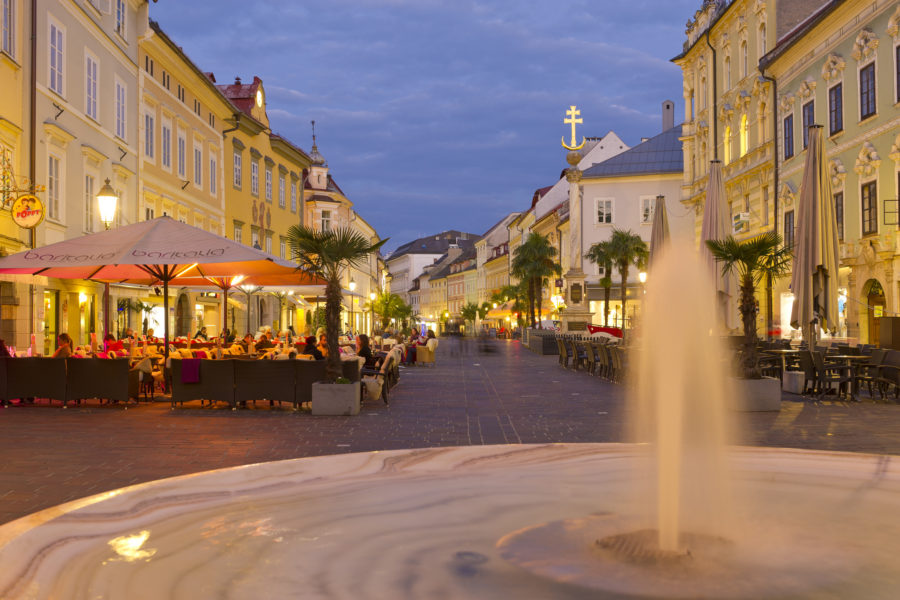
The Carinthia Card opens the doors to more than 100 tourist attractions in Carinthia. There are also rebates at more than 60 bonus partners. The card is valid from April to October and is available for periods of one, two or five weeks. Info: hhttp://www.kaerntencard.at
Carinthia as the setting for events
During the course of the year, Carinthia is a popular stage for sport and music events. Those of international fame include Lake Weissensee’s alternative to Dutch eleven cities tour (ice skating marathon), the United World Games, the Ironman, the World Body Painting Festival, the “Wenn die Musi spielt” live entertainment show, the “Starnacht” musical event and European Bike Week.
Winter in Carinthia: skiing and more
There are 30 skiing areas in Carinthia and East Tyrol and around 800 kilometres of well-prepared pistes that can guarantee snow and invite visitors to enjoy skiing, carving and snowboarding. Cross-country skiers, snowshoe hikers and free riders also get their money’s worth during Carinthia’s winters. When a thick sheet of ice forms over the lakes in winter, ice skaters and ice hockey players bustle about under deep blue skies and sunshine. Info: https://www.visitcarinthia.at/ski/
